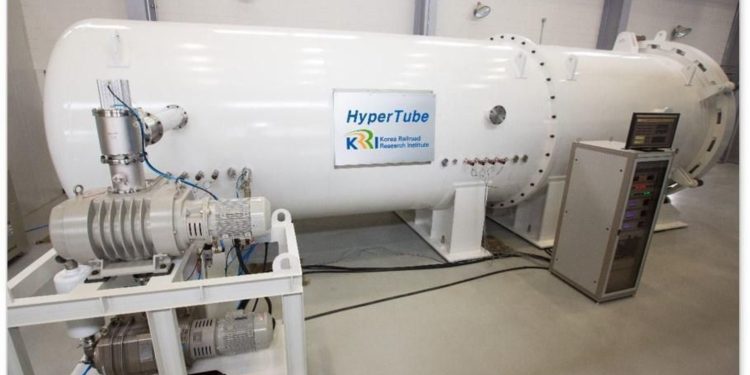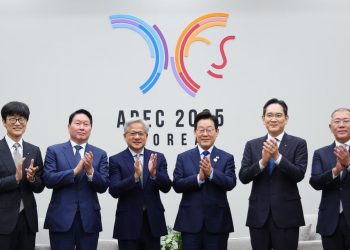South Korea has embarked on developing its own hyperloop technology, known as Hypertube, aiming to become a leader in ultra-high-speed transportation. A dedicated task force was established on April 9, backed by an initial budget of 12.7 billion won (approximately US$8.8 million) to support early-stage research.
Currently trailing behind early adopters like the Netherlands, Germany, Japan, and China, South Korea’s hyperloop technology is expected to make significant strides. Experts believe Hypertube, a next-generation magnetic levitation (maglev) transport system, is crucial for fostering balanced economic growth across the country by providing ultra-fast mobility for passengers and cargo at speeds exceeding 1,200 kilometers per hour.
Although South Korea has only recently initiated the Hypertube project, other countries have made significant progress in maglev and hyperloop technology. China introduced the world’s first maglev train in Shanghai in 2004, capable of reaching 600 km/h, while Japan’s maglev train hit 603 km/h in 2015 and is constructing a line between Tokyo and Nagoya, set to begin commercial service after 2030. The Netherlands and Germany have also made strides, with hyperloop test tracks and prototype models developed in recent years.
Experts in South Korea believe that consistent investment and research could quickly close the gap with these international leaders. The country’s existing railway technologies, such as the KTX—which can reach speeds of up to 300 km/h—and the GTX, operating at 180 km/h, provide a strong technological base. Lee Won-sang, vice president at Hyundai Rotem’s Rail Solution R&D Center, highlighted that achieving speeds beyond 370 km/h requires trains to levitate to overcome air resistance, underscoring the importance of maglev technology for the Hypercube.
Cho Seong-kyun, who oversees railway safety policy at the Ministry of Land, Infrastructure and Transport, noted that Korea’s edge in technologies such as electric propulsion systems, vacuum tube design, and superconductive magnets is helping accelerate the development of the Hypertube.
He emphasized that these technologies will enable South Korea to introduce the Hypertube “in the not-too-distant future.” Cho also noted that Korea’s telecommunications and electric power infrastructure are well-positioned to support the high-speed system, ensuring safe and reliable operation even at extreme velocities.
The superconductive electromagnet, regarded as the core technology behind the Hypertube, is a particular point of pride for South Korea. It plays a crucial role in maximizing efficiency and safety, leveraging Korea’s world-leading advancements in fusion power technology.
Cho explained that the commercial launch of the Hypertube depends on extending the preservation time of deuterium in fusion reactors, which has recently achieved world records. This close relationship between fusion research and hyperloop technology exemplifies South Korea’s integrated approach to innovation in ultra-high-speed transport.







